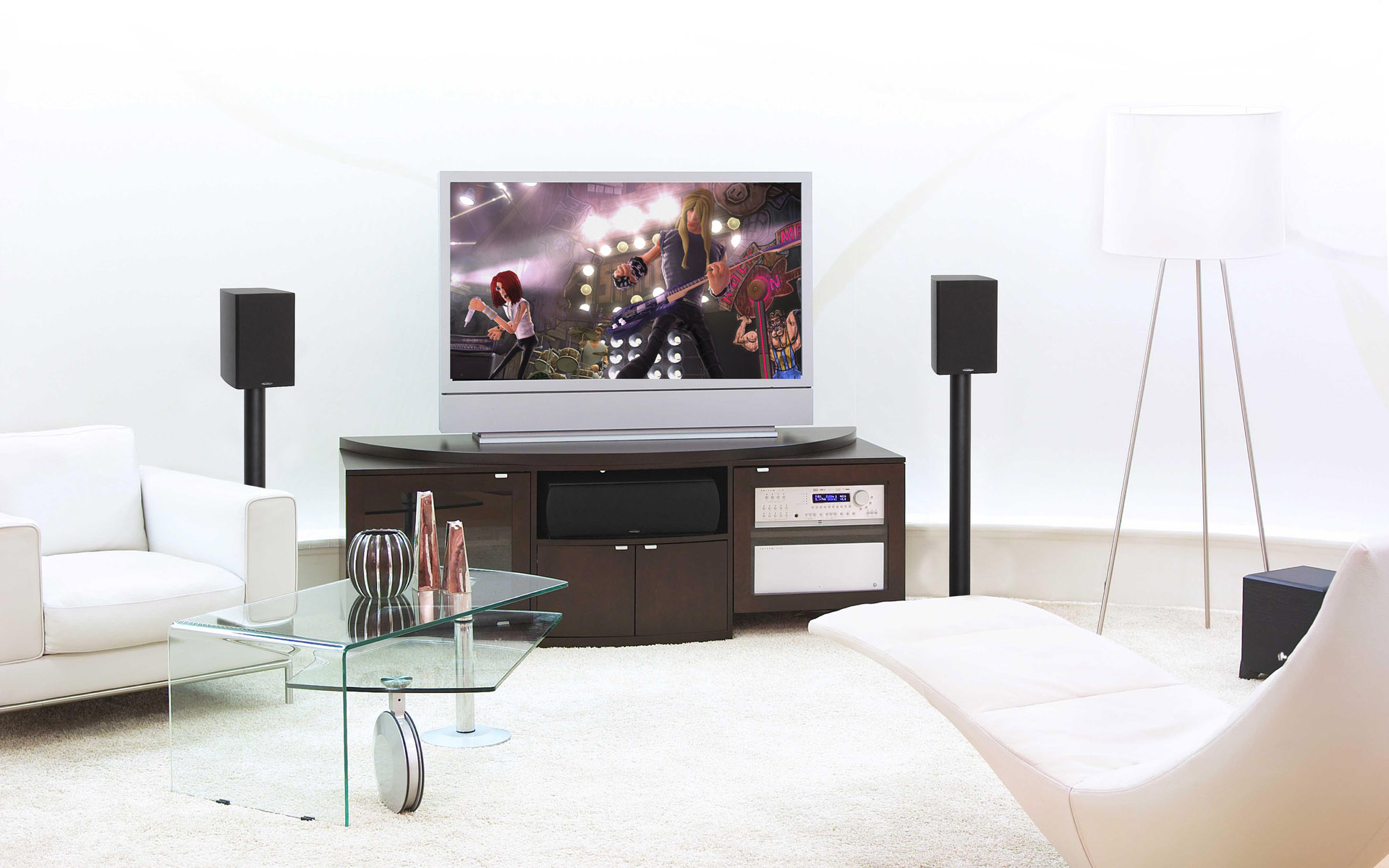Once the boxes have been opened and all the shiny new devices uncovered, it is time to put those home theater component together to create the perfect picture and ideal sound experience. Unless you want to pay a lot for a professional installation, this set-up is probably on your shoulders. While surround sound speakers come in only a few varieties, living rooms come in all shapes and sizes. Living room speakers work best when you take time to study your own acoustics and customize speaker position. Use these tips for the best sound arrangement in your house:

1. Use Any Sound Detection Features Available:
Modern day home entertainment systems make it easy to install speakers. Once all your wires have been connected and you are ready to start placing speakers, looking in your instruction manual for any detection and arrangement options. Often a small receiver is included to place in the middle of your living room, where you can run a test that will automatically adjust speaker levels to the right places. This works well when you must arrange speakers awkwardly and make the most of a poor acoustical environment.
2. When in Doubt, Aim for the Center:
Surround sound speakers, regardless of the number, should all focus on the center of the living room. When putting up the speakers, aim them toward the middle of your seating area instead of facing them straight ahead or outward. This works best when you have many speakers, but it is a handy rule of thumb for all entertainment systems.
3. Ear Height is the Best Height:
If you have a choice on the height of your speakers, set them at ear height for the best effect. It may seem like a small difference, but when it comes to sound waves even a small adjustment can make a big difference. Keep in mind, ear level when sitting down to watch a movie is much lower than when standing up. While it may be difficult to set certain speakers (such as back speakers) at ear height, speaker stands and wall hooks can solve many problems.
4. Minimize All Potential Reflections:
Reflection refers to how easily sound waves can bounce off of surfaces. In general, reflection is bad for home acoustics, because it creates interference very easily, filling your room with echoes and reverberations that do more harm than good. In general, hard and smooth materials like boards and stone reflect easily, while soft materials like carpet and drywall absorb sound and reduce the problems. Some surfaces may be beyond your control, but if possible cover windows with drapes to avoid reflection off of glass.
5. Divide and Conquer…Usually:
Many speakers come in pairs. When you set these speakers up, divide them on either side of your TV. For speakers designed to go on the sides of the acoustic space, position them opposite one another (and again, aimed at the center of the room). However, there are some exceptions. Back speakers work best when they are grouped closely together. Subwoofers, if you have more than one, also work best closely together.
Amber Chalmers is a professional blogger that provides consumers with advice and information for Memphis home entertainment products and security systems. She writes for Phoenix Home Entertainment, a Memphis home security systems and entertainment services company.





